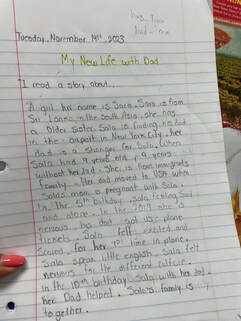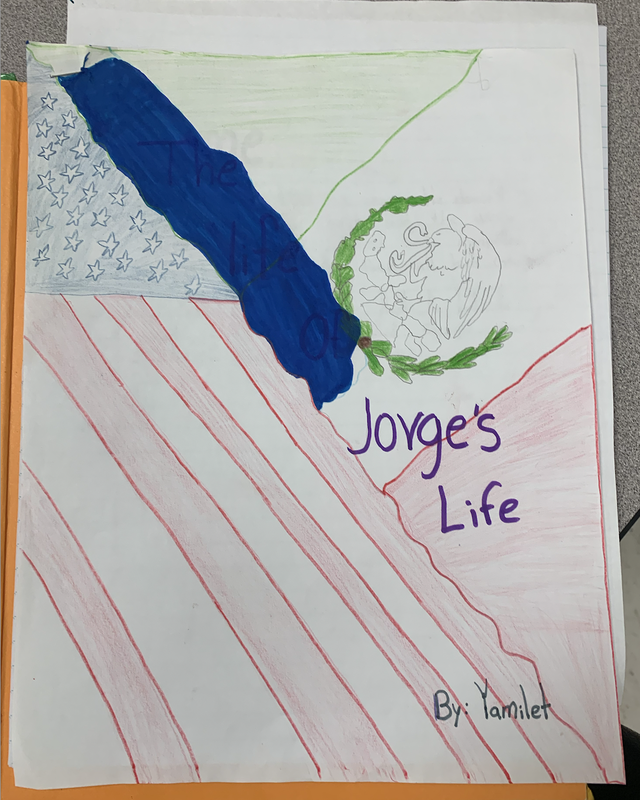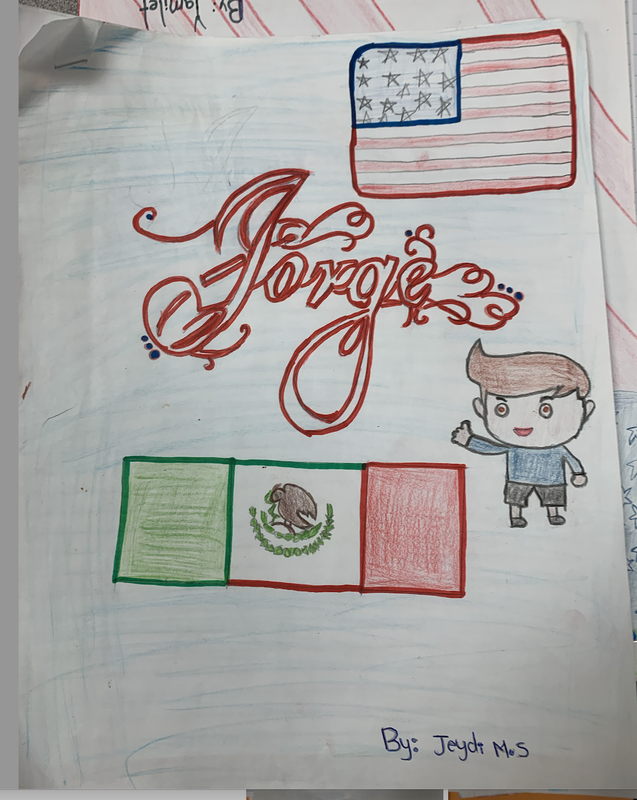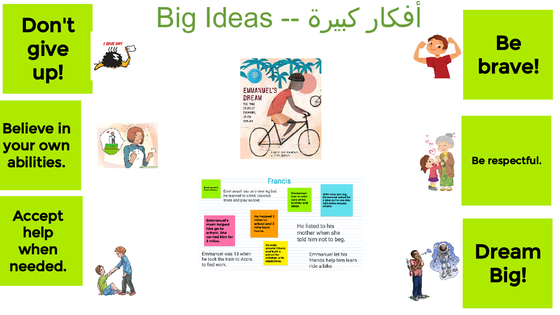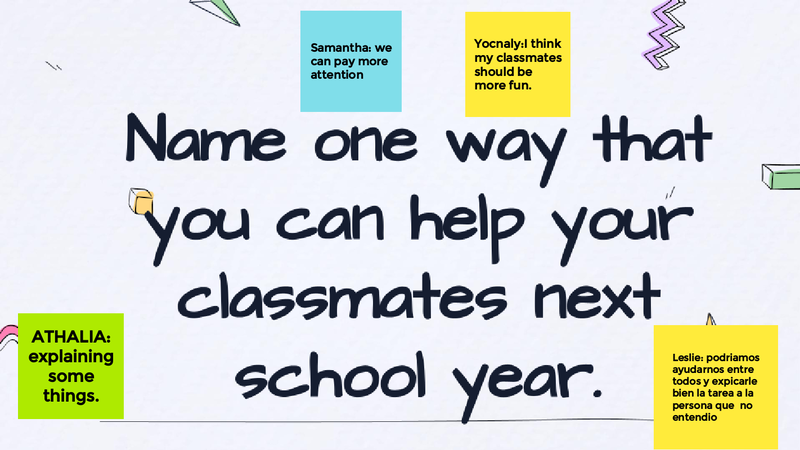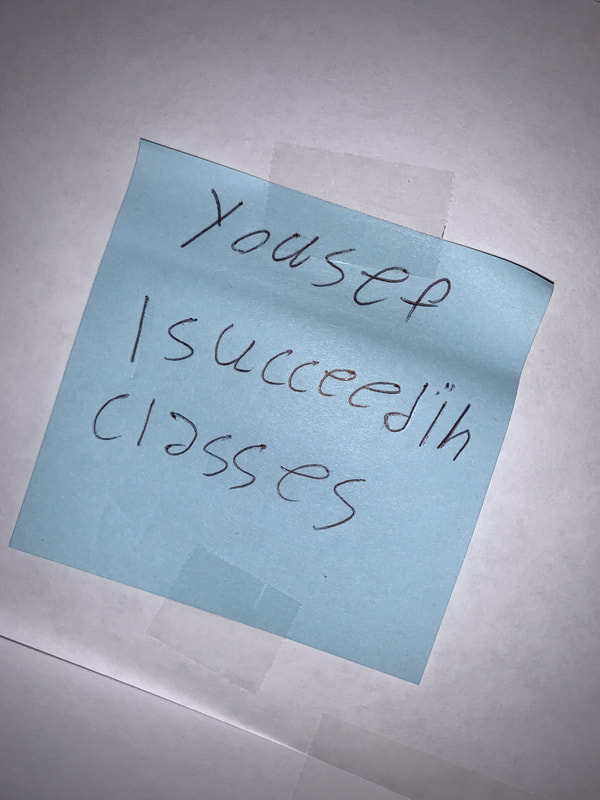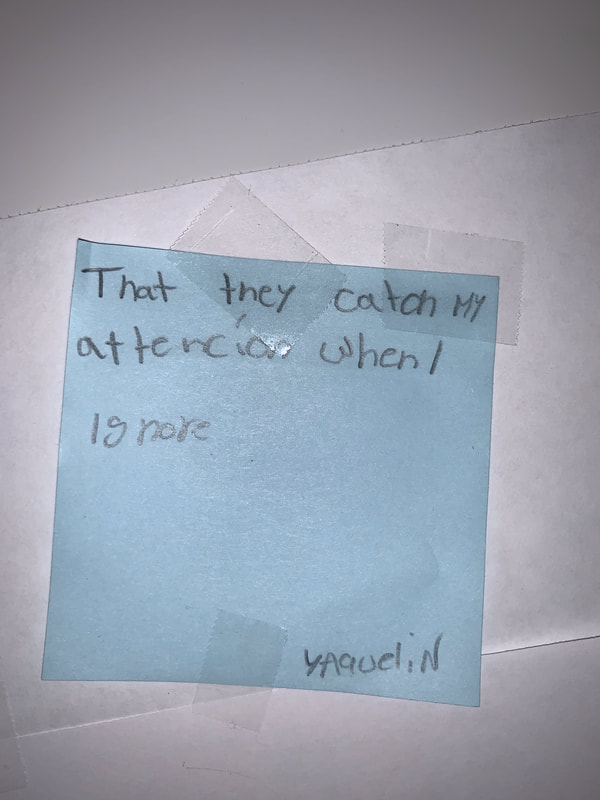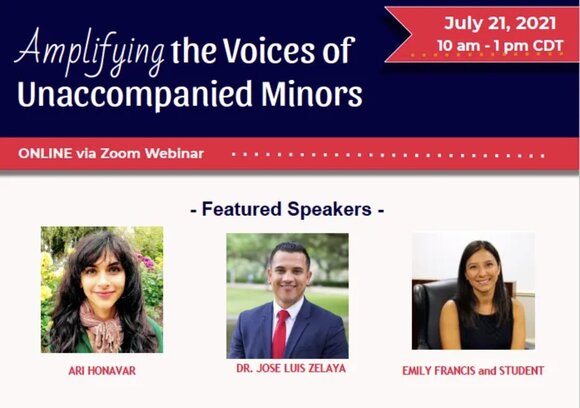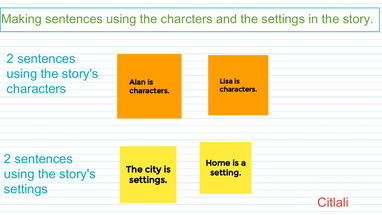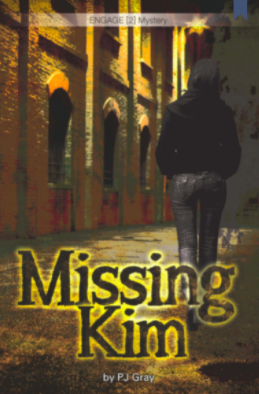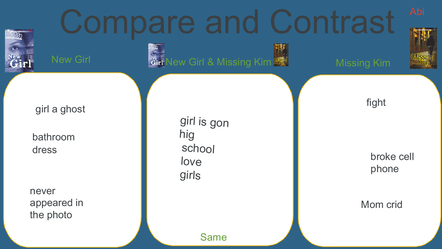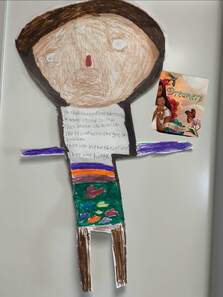Tell the Story Podcast
I couldn't think of a better way to wrap up the school year with my newcomer students than by creating a podcast!
I am ending the school year with 16 newcomers. This is my students' first year in the US and their first course to learn English as an additional language, acculturate, and begin their immersion in the US school system. Throughout the school year, we engaged in many lessons where students had the opportunity to grow emotionally, academically, linguistically, and socially. Stories after stories and activities after activities, my students had the space and time to process their experiences and continue developing their identity as learners while making connections and creating interactions. The core of everything we do in my newcomers' course is HUMANITY. Growing and developing our humanity FIRST is more important than anything else. I hope you enjoy listening to their learning experiences. Process:
This is my ________ school year in the US. I am in _________ class. My first favorite lesson this school year (semester) was _____________, because ___________. My second favorite lesson this school year (semester) was __________, because ____________. My third favorite lesson this school year (semester) was __________, because _____________. My least favorite lesson this school year (semester) was __________, because ______________. This was (a great) OR (not great) class because __________________.
If you choose to do this, let me know! I'd love to hear your class's episodes. Thank you for reading!
0 Comments
This post is wrapping up the writing lessons I've shared in three previous posts. My newcomers are finishing up their first semester in the US and I wanted to demonstrate how capable and successful they can be with writing and demonstrating their understanding. As I stated in my previous post, my newcomers are at all different levels for writing. Some can write in English on their own, others just need a little support from peers, while others need teacher support to guide their writing. Because all students are at different levels, I incorporated an activity for all students to complete while we were finishing up our final essay draft. The editing process for newcomers DOES NOT need to be complicated. Do NOT make it too much that they can't handle because is too overwhelming. My editing process was simple and doable. The goal was to have peer and teacher reviews. This allows newcomers to feel empowered because they edit a peer's work. Objective: I can make my summary better by having my peers and my teacher edit my writing. This objective was comprehensible and doable by all students. We discussed that "edit" is simply reading and fixing what you think needs to be fixed. I modeled it with a paragraph adding periods, fixing capital letters, adding commas, fixing misspelled words, etc. Minor edits! Students changed papers with a peer and they all received a PEN. I instructed them to NOT erase anything but to write over the written work that needed to be edited. Some students used Google Translate to verify some spellings and that was OK! Working at their own pace
This is POST #2 of three different posts
Read post #1 (It's not Magic) AND #3 (Editing Writing Process with Newcomer) The Process - Part II
~ "Reading is like breathing in; Writing in like Breathing out" ~ These were the words that helped me understand that the language lessons I provide to my students go hand-in-hand with the language I require them to produce. I understand that my job as an educator is to make my students fall in love with language, words, stories, and imagination. I must maintain classroom walls dripping with language produced by them as a resource as they develop their language domains. I encourage you to read Ms. Allyn's article HERE.
So, with this in mind, here's the next part of the process that led to my newcomers producing the amazing writing I mentioned in Part I. 
First, I want to state that this was an improvised lesson and planned overnight.
I was in my English II inclusion class when I looked over our Vietnamese newcomer's shoulder who was looking up on Google "What is a summary?" to complete his assignment. I realized that even if he translated the word "summarize" into his home language, he still didn't know the skill. I did not doubt that I had to cover this skill in my newcomers' class. I started the day with our newcomers by having students write their "I can statement" which stated that we were writing a summary. I didn't want to intimidate or discourage students from having to write. I wanted them to feel successful from the beginning. I explained that a summary is just "telling the story in your own words". No grammar complications. Some might say that I need to offer more structure or a more grammatical approach. However, I advise NOT to complicate the process for beginner students. They are in the entering stages of producing language, so we don't want to make them feel that there are too many hurdles to jump through to share our thoughts on writing. In the next lesson, you'll see how editing processes allow room for grammar and more to better their writing. I read the story out loud again, but this time it was the entire story. I had students follow along with me on the screen or in their paper magazines. Once in a while, I'd stop and they would have to say the word I left out. Again, as I'm reading, there's interaction with simple Q&A, hand gestures, body language, sounds, laughter, and excitement. Next, I posted a blank piece of chart paper and told them that to be able to summarize the story, we needed to pull the most important words from the story since we were NOT using the article to summarize it. The list of words we were pulling from the article was about to become the foundation of the events of the story we want to tell in our own words. To keep them engaged and accountable, I had them also write the words on a black piece of paper so they would have them with them. I told them that I was going to read again and STOP at the end of a paragraph to make a list of ONLY the most important words needed to retell important events. I'd circle the paragraph and say, "Tell me what is an important word that can help us make a sentence." - Students would blur out words (some good - some not so good) but I'd validate the words that would go with the events that were essential/important in the story. As a teacher, you must know that there are parts in the text that are not essential to the story. If you take that part out of the story and it doesn't affect/change the meaning/plot of the story, then it's not important. Otherwise, you'd end up with way too many words for students to follow. As students were telling me words, I'd write them on the chart paper until I ran out of room and we got to the end of the story. I tried using a different color marker for each paragraph so they'd remember that it was a different event or paragraph in the story. I pointed to each word and I read them out loud. Then, I had them read them with me. This is POST #1 of three different posts Read post #2 (Act of Writing) AND #3 (Editing Writing Process with Newcomer) A few days ago I shared on social media some amazing writing my newcomers produced after a lesson. My students received many compliments. I was asked about my "magic" to have newcomers writing so much. There is no magic. But, there sure is a LOT of...
I want to share my planning and lessons process to get newcomers to write...and write a lot! I'll make this post as simple as possible because YOU need to take this and make it your OWN. Add your details, ideas, and character to it so it works for the students YOU teach. This lesson is almost towards the end of our first semester. I've served this group of newcomers for several weeks (15 weeks). Be sure to check the previous lessons that contributed to becoming amazing writers. I'll be posting several lessons a little bit at a time. The Process - PART I I introduced the cause-and-effect topic to my students by co-creating an anchor chart. I say co-created because we created it all together. It was not super fancy, but it was multilingual!!! I wrote the following sentence on the chart and had them read it with me. "Something happens BECAUSE something makes it happen." I had students translate the sentence and had volunteers write the translated sentence below the English version. We had the sentence written in 4 different languages. I explained that the CAUSE is the why (reason) and that EFFECT is the what (result). To practice understanding this concept before applying it to text, I had this Jamboard presentation with four sentences to identify the cause (why) and the effect (what). These were simple sentences wit images that helped with comprehension. I gave students sticky notes to place on the anchor chart which part of the sentence is the cause and which is the effect. We did a couple together to model after I read each sentence aloud, chorally reading, and students read alone. I went around and checked their answers before they placed them on the chart. As I went around, I had students read the sentence to me. I was able to assess who was understanding the concept and who needed more support.
What a year!! In October 2021, I started meeting virtually with a group of teachers of newcomers who are interested in learning new strategies, and gain lessons ideas to serve and teach their newcomers. I have a list of over 300 teachers who monthly receive an invitation to meet and learn together. Of course, not all teacher attend, but sessions are recorded and I know MANY go back and catch up on the recording.
Our monthly meeting routine is basically the same every time. We have an expert and guest speaker share for 30-40 minutes then we go into grade-level breakout rooms to discuss deeper about the topic. In our breakout room, we have a shared document where we make notes of any ideas or resources we lean about from each other. I am so grateful to amazing and superheroes in the field who have agreed to join us and share their expertise with us. We are better because of their teaching and guidance. A HUGE shoutout to these amazing #PLC4newcomers’ superstars who shared with us from November 2021 to December 2022. If you are interested in watching our previous meetings, follow this link to my YouTube channel ===> https://bit.ly/PLCplaylist We are continuing these meetings in 2023. If you'd like to joining our PLC email list, please enter your information HERE and I will make sure you're invited to our next meetings. Be sure to check out these amazing presentations and follow our SUPERSTARS!!
November - Supporting Struggling Learners with Patricia Vitale-Reilly -- @pattyvreilly
December - Does This Work with English Learners? Holly Genova -- @GenovaHollyAnn January - Language Lens with Sarah B. Ottow -- @SarahOttow March - Re-Imagining Migration with Adam Strom -- @afstrom March/April -- Ramadan with Abeer Ramadan-Shinnawi - @shinram1 May - Wild About WIDA with Courtney Morgan -- @MrsMorganTeach June - Celebrating Us with Lee Perez - @LanguagePerez October 2022 -- Boosting Achievement with Carol Salva -- @DrCarolSalva November 2022 - Engaging Families with Hannah Levister -- @HannahL_MLP December 2022 - Sense of Belonging with Valentina Gonzalez -- @ValentinaESL
If you watch any of these fantastic presentations and find it helpful, please share a comment with me. I'd love to know how we're impacting YOU and your students.
Thank you for reading and watching! My Name Is JorgeI have to be transparent and share that poetry is not one of my favorite genres to read or to choose as a mentor text to teach my students. Of course, once in a while, I come across some amazing poems that shake me to my core - like "My Name is Jorge: on Both Sides of the River" by Jane Medina I LOVE using this book towards the end of April to celebrate Poetry month but also to begin introducing our last unit of the school year - Moving Stories. I cannot remember how I came across this book, but what I do remember is turning every page and finding myself reflected in every word. I'd say that this is one of the first books I came across in my first year of teaching and it impacted so much in the material and resources I began using to teach my multilingual students. What fascinates me about Jorge's story is that each poem is a window for the reader to learn about an event and experience in Jorge's life. Each poem is at a kid-friendly level that children can understand and learn from Jorge and his family. Lesson #1Unfortunately, I only own two copies of this book so I had to get creative to have students read the book. I started by analyzing the book first and deciding which poems are the core of Jorge's story. Even though all the poems are fantastic, I knew that reading the whole book would've been overwhelming for my newcomers since there are 27 poems. The poems I chose are: My Name is Jorge Invisible Why Am I Dumb? The Busy Street Dirty Words Mexican Dummy Tine The King of the United States Ants-On-A-Log My Paper Suspended Men Don't Cry The Test Packing Once I had selected the poems I wanted to have students analyze, I made a list of themes I noticed were highlighted by each poem. The themes I came up with were Language, Food, Representation, School, Immigration, Name, Family Divided, Unfairness, and Back to Mexico. I made a copy of the poems I selected (along with the Spanish translation) and I placed them all around our classroom. The idea was to have students get up and go around the room reading the poems. The assignment was to read each poem and think about what the poem was mostly about. Each student was given a sticky notepad to share how each poem is related to one of the themes listed by the teacher. I had placed the themes on chart paper on the board so students knew what each theme was. Many of the themes were topics we had discussed during previous lessons. I also left a chart paper with a question mark for students who wanted to brainstorm their theme. Lesson #2My students learned a lot about Jorge and his family - As we were discussing what Jorge and his family had experienced in Mexico, throughout their immigrant journey, and here in the USA, I noticed that it was becoming easy for my students to retell the events and connect with Jorge's life. So, the follow-up lesson was to take the sentences we had written on our sticky notes and the knowledge we had gained about Jorge's life to write all about Jorge's life in a narrative format. I put together a packet for each student to begin a story draft. Each packet contained a cover white sheet of paper and ten notebook sheets of paper - one for each theme in the story. After students created a cover for their story about Jorge, they were instructed to retell Jorge's story using the sentences they created from each poem and for each theme. We talked about how a story must have a beginning, a middle, and an end - so as they picked the order of their sentences, they were to consider what might've happened when and in what order. For example, the poem about Jorge's name is. a great poem to introduce Jorge. Next, poems that share about this childhood, migration, school, family, etc. All books were different since everyone had a different perspective of the poems and added their perspective. Each student's book about Jorge had at least 10 pages and was in chronological order. Once the story drafts were ready, students took turns to meet with me to make sure the book was in the correct order. We also discussed ways to make the book interesting and with our perspective and connections added to it to make it interesting. Lesson #3Students' stories were fantastic and I didn't want them to just remain a draft - I knew that these stories needed to go out to their world to read. These stories are such a great example of how powerful a story can be - how important it is for students to read books that reflect and affirm their existence.
I've always used the website WriteReader to encourage my students to publish their writing for the world to see. This, of course, was the first resource I thought about when thinking about publishing my students' stories. Here are their stories. I encourage you to make time to read them and perhaps you can also find a personal connection with these stories. Yency's Jorge's Story Alanie's Jorge's Story Jeydi's Jorge's Story Yamilet's Jorge's Story Miriam's Jorge's Story Alhassan's Jorge's Story Alhussein's Jorge's Story Enrrique's Jorge's Story Alexander's Jorge's Story Jhosselyn's Jorge's Story Luis' Jorge's Story BIG NEWS! It's HERE. My book's cover reveal is finally HERE! I am so excited to share with you the wonderful cover of my book: 𝙄𝙛 𝙔𝙤𝙪 𝙊𝙣𝙡𝙮 𝙆𝙣𝙚𝙬: Letters from an Immigrant Teacher - Published by Seidlitz Education In my book, I share my immigrant story through letters written to my newcomer students The publication date is September 1st, 2022 Be sure to complete THIS form to get all the updates!
PLC - "A professional learning community is a team of educators who share ideas to enhance their teaching practice and create a learning environment where all students can reach their fullest potential."
I love this definition of what a PLC is all about because I've seen it and experienced it in action. For the past few months, the #PLC4newcomers team has been meeting weekly through Twitter space chat and once a month through Zoom. If you're not familiar with space chats, it is a new feature Twitter provides where a group of users can get together and share about a given topic. What I like about space chats is that you can hear participants share their thoughts and ideas. Over the past four months, I've been the host of our space chat. Educators from across the country share ideas "...to enhance their teaching practice and create a learning environment where all students can reach their fullest potential."
Anyway, the actual purpose of this post is to share all the notes I have from our Jan. 20th chat. This chat was by far the most attended and the most engaging of all. Along with teachers sharing in our space chat, teachers were also using the hashtag to share tips, images, ideas, and resources. It was an amazing time encouraging one another.
The topic of conversation was "Starting a new Semester - Get to know you activities" - Listed below are all the activities shared. Resources
I was trying to balance all the information being shared on Twitter and the information our participants were sharing. I took notes and promised I was going to curate this information and sharing.
Below you'll see a Wakelet with all the resources shared on Twitter. If you don't have a Twitter account and would like me to share these resources, please let me know. If you're reading this and can share some ideas with us, please, add them to the comments. I'd be happy to add them to this blog post. Also, if you can join our Twitter space chats, that would be amazing. We chat on Thursdays evening at 7:00 PM ET, just follow the hashtag #PLC4Newcomers and join. We also meet once a month via Zoom. Hope you join us!
Thank you for reading!!
I
Do Not Like Tests/Exams.
Students do not like tests/exams either.
They are, for the most part, created and administered with a "gotcha" in mind. For the most part, tests are to reflect what the student learned and can demonstrate. They cause so much anxiety in students and they're not accurate of the actual learning students acquired. As I created my newcomers' final exam for our ESL for Beginners course, I created it intending to reflect on my teaching abilities and my skills to help students understand and ability to re-tell what they've learned. Their scores will evaluate ME. I also wanted our final exam to serve as an opportunity for my newcomers to show what they've learned over the past few weeks. After having my newcomers in class for roughly 14 weeks, I've decided to create an assignment where each student would work independently to demonstrate literacy skills in English. I showed students all the books in the "Welcome Newcomers - Fundamental" kit published by Saddleback Publishing (FREE sample in link), and had each student choose a book of choice. I told students that they were going to read the book "in English" and provide a book report. They were not too intimidated to do the work since we had been working with Saddleback books during small groups. They knew to use the following strategies to help them understand the book:
The Scaffolds to a Successful Project
I wholeheartedly agree with the quote above. Investing in our students' identities is so important, and it pays off.
To invest in our students' identities and create lessons around students' cultural interests, we must invest time to know our students. I have a student who loves cooking. Every once in a while he'd send me videos and messages about what he is cooking. He loves telling me about the ingredients and the cooking processes. He knew it didn't bother me since I was always asking questions about his cooking. This student was the influence for this lesson - Our first ESL Class' Recipe Book --
Lessons that don't work for me or my students are my rocks! I don't know about you, but every now and then there is a lesson that must be abandoned...whether is because of planning or because students are just not into it.
But, just like the quote says - We can use these rocks in our way as stumbling rocks OR stepping stones to better our craft and better out students' learning. The last days of October, my lesson plans were around using Scholastic articles and having students present in groups. Well, this lesson went down the drain when school started that week and I noticed my students were not into doing work --They looks very unmotivated since the first quarter was ending. I knew immediately that I needed to switch my plans and engage student in a fun activity. This is when the elementary teacher in me began planning a craft activity. Of course, because I'm teaching English as a second language and LOVE using content to develop language...I decided to use NEWSELA as a resource for our lessons. We were in the week of Halloween (spooky time) so I thought it would be appropriate to read about our skeleton!
You heard it say...and I'll say it again - Teachers, work smarter NOT harder!!!
After my newcomers finished creating sentences based on their sketches of the story "Emmanuel’s Dream: The True Story of Emmanuel Ofosu Yeboah", (SEE LESSON HERE), I wanted my students to do something with their hard work. THIS lesson here gave me a GREAT idea for our next lessons! This lesson extension lead us to discuss "Big Ideas" found in the story, analyze visible and invisible traits, and compare and contrast ourselves to Emmanuel. Big Ideas
The "Big Ideas" were not a difficult process to explain since I presented them through a Jamboard, so my students quickly translated the ideas and were able to understand them. We sure practiced reading them in English and found sentences we had created to match each "Big Idea".
The list of "Big Ideas is in the lessons shared above on page #4. The handout is to compare and contrast, but I only had them complete the "Emmanuel" part. The matching details supporting each idea had to come from the sentences students had already created; so, there wasn't any extra work to do besides analyzing the sentences and placing them on the corresponding "Big Idea". 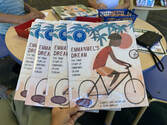
One of my favorite and most impactful picture books I enjoy using to teach my newcomers is - "Emmanuel's Dream: The True Story of Emmanuel Ofosu Yeboah" by Laurie Ann Thompson
Emmanuel Ofosu Yeboah's inspiring true story and the fantastic illustrations in the book are a great tool to not only teach English as a second language but also encourage our students to embrace who they are and believe in their abilities and potential. The first thing I did was check with my public library to see how many books were available to check them out and use in our class. Eventually, I'll buy my own class set!!!
I LOVE highlighting and posting on Twitter and Instagram my students' work. Just like they are proud of their work, I'm proud of it too. So, last week, right after posting about my newcomers' fantastic writing, I received a question from a follower. She asked: "How are you able to get newcomers to produce that much written language? I am super curious!"
This question surprised me because I've worked with newcomers for years, and I don't have a problem getting my newcomers to produce written work - unless, the student is a SLIFE (students with limited formal education). -- But even like that, I've figured out ways for newcomers to produce written work that demonstrates their learning...see this lesson here. Anyway, I thought I'd share here how my newcomers' written work was scaffolded so they demonstrate their full potential. Picture Book Project
In my opinion, picture books are the best text we could use with newcomers that will provide the understanding and the language they need to be able to retell the story.
I started by sharing with my newcomers a list of guiding questions we were to use to help us understand and retell the story.
I had two class meeting days left with our newcomers, and I wanted to do something productive. As an English as a Second Language (ESL) teacher, when I think of rich lessons, I think of activities that will make my students think critically, move around, use all language domains (speaking, listening, reading, and writing), and learn!
At first, I thought about showing movie clips about mystery or suspense movies. I could have had them identify story elements like characters, settings, problems, solutions, and describing the plot - which is what we did using text. But, I didn't want my newcomers to get the idea that I wanted them to watch movies as we end our school year. I also didn't want my colleges to see my newcomers watching movies instead of doing productive work. So, what better than End-of-School Year reflection questions?!? Most of my students were face-to-face, but I had four student who were learning virtually. Hybrid teaching is challenging when you are trying to have an interactive and engaging lesson. But, technology comes to the rescue in times like this! I've taught my newcomers how to use google slides, Jamboard, and how to navigate our course Canvas page.
For the most part, I agree when people say - "don't reinvent the wheel..." - Not reinventing the wheel has saved me so much time. I've learned a lot from other educators. However, when it comes to working with newcomers, you can't just use the wheels you find -- somehow, you must reinvent it to make it fit with the group of students you're teaching. You know - personalizing your lesson for a better outcome.
So, if I wanted my students to answers great end-of-year reflection questions, I quickly began searching for what other educators have created. These were the two web pages I found useful to do what I needed.
I created a google slides presentation so it'd look presentable and colorful. Each slide had a question in big font to emphasize its importance. You can access the slides below!
Two reasons why google slides are useful with this activity:
My face-to-face students received colorful sticky-note pads to answer each question.They placed their answers on a chart paper that had all the questions. My virtual students received a link to a Jamboard where they answered on a sticky note for each question. Here is the Jamboard if you'd like to make a copy and use it with your students.
Students were all engaged. Not only were the questions open-ended so they could share their thoughts openly, but it created a stress-free time for students to share their voices.
Several of their answers will serve to make some adjustments as the support they need for the next school year. A great educator should ALWAYS make room for improvements - especially when students are giving feedback. I also learned a few new things about each student - especially the two newcomers who had only been with us for a week or two. The activity outcome made me happy. I almost cried when I saw a few of them mentioning me in their answers. Needless to say, we wrapped our last day with a group picture and selfies. See pictures HERE. What feels like the end
Thank you for reading!
Amplifying the Voices of Unaccompanied Minors Virtual ConferenceWhen & Where: July 21, 2021 10:00 am – 1:00 pm CDT Zoom Conference What it is: Amplifying the Voices of Unaccompanied Minors is an opportunity for teachers and school leaders to hear from those who have lived the experience as an unaccompanied minor in the American school system. To register - Click HERE
As our newcomers' course comes to an end, I began thinking of ways to make time and space for students to demonstrate their full potential. One way students, regardless of their English proficiency, can be by creating something to demonstrate their ability to put together all the skills and elements we've learned for several weeks. When I think about students creating something, the first resource & platform that comes to mind is WriteReader. I've used WriteReader for years. I've used it with elementary students and now with high school students. It's a student-friendly platform and easy to use for teachers. Once you create your teacher account, you add students to your class list. So, as a culminating course project, my newcomers were to write their own mystery/suspense story after reading a couple of stories from Saddleback - To read about the lessons that lead to this final project. You can read blog post #1 HERE and blog post #2 HERE. Lesson #3 - End-of-Course ProjectThe idea for this project was to provide an opportunity for students to show understanding of the story elements we had learned over several lessons. Elements such as characters, settings, problems, solutions, character development, and plot. These elements may seem like a simple list for students to learn, but the key here is to use the elements in English. To be able to understand and respond using the English language. I didn't want to overwhelm my students with so many instructions and/or rubrics for this project; though I believe a rubric would've been great to hold them accountable with all the required elements. Instead, I gave students a list of elements to include in their story. All the elements listed were items we had analyzed in previously read stories, so I knew they would have not struggled to understand and following the list. Click HERE for a copy of the elements checklist for students' story Each student received a copy of the checklist to use as self-check for what they needed to include in their story. I showed students my own suspense story and highlighted every element in the checklist. Because the platform is student-friendly, it didn't take long to show them and explain how to create their book. Several students shared their excitement to invent their own stories. Some talked about writing a suspense story based on a personal event. I thought this idea was fantastic. Using funds of knowledge is a great thing in our classrooms. It's just what we want our students to do - to use background and personal experiences to demonstrate their full potential. Publishing Our Stories: It didn't take long for students to begin writing their stories. I even had a student complete her story in 24 hours! The day our project was due, I read aloud each story. As I finished reading each of their stories, I complimented them and praised them for their hard work. We went through each student's checklist to ensure they had all the required elements. It was so much fun reading their stories. If you'd like to read their mystery/suspense stories, please do so and share your thoughts. Yocnaly's story: Amelia's Last Night Yaquelin: What's Behind that Door Abi: The Cabin Citlali: What's in that Room Guadalupe: What Happened to Everyone Luis: The Mysterious Parota Dixon: Mente Yousef: Missing Money Samantha: Abigail's Reality Leslie: Mikey's Graduation Athalia: Fear in the Dream Students were encouraged to use an electronic translator or write in their home language. As I read each story, I provided feedback edit ideas. All students published their work in English. I even had a couple of students whose stories were so long - They shared with me how excited they were about publishing their own stories and that once they started writing, they couldn't stop.
It was amazing to see how into writing they all were. Even my virtual students were super engaged! I appreciate platforms like WriteReader that allow students to discover their love for reading and writing. I also love having books like Saddleback books that not only helped developed my students' reading skills. Have you used any of these resources? If so, share with me how you've used it. I'd love to add tools to my toolbox. I cannot wait to show these books to my students next school year. I'm so proud of their hard work. Thank you for reading! I was thrilled to see how well our newcomers did while learning character development. But more so, I was excited to hear how much they enjoyed reading the stories and how well they understood them. I have so much faith in the hard work Saddleback puts into each and every book that makes it to our classrooms. I enjoy using these books to teach our newcomers. This blog post is a continuation of a previous post - to read about lesson #1, click HERE. Lesson #2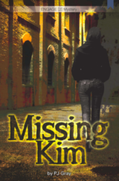
After our prediction, I read the story out loud while students followed along and tracking the text. There were some comprehension checks while reading just to make sure students were following along. After reading the story we identified a list of characters and settings and used this list to create complete sentences - Our sentences were simple but they were able to create them themselves and read aloud on their own. See Jamboard slides 7-11 to see students' independent work. Comparing and contrasting stories: To teach the concept and the language of compare and contrast, I used this image of an orange and an apple. Students were able to tell me how these two items compare (similar/same) & how these items contrast (different/not the same) - It was a fun activity and students were engaged blurting out answers. Once students understood the concept of comparing and contrasting, we were ready to begin tackling our stories. I began by showing students the stories side by side just like the fruits in the example above and shared one similarity and one difference between the stories. We made sure that anything we added was found in the text and not just our inferences. Once I modeled, I let students help me out by sharing one more similarity and difference. This gave an idea of their understanding of the assignment. See students' independent work completed on pages 14th - 19th. To see the entire Jamboard, click HERE. This activity gave me a good idea of their text comprehension. By providing text evidence and placing them in the correct box, I can tell that comprehension took place therefore language acquisition happened too!
Be sure to check our next lesson when we create our own stories using the elements we learned in these two stories we read. If you have a different way to teach compare and contrast, please, share it in the comments. I'd love to learn from you and add tools to my toolbox. Click HERE to read Part 3 Thank you for reading! I cannot believe I am sharing our end-of-course lessons and project! This year, though like no other, went by so fast. So, here we are admiring how far our newcomers had come. This school year, I had a couple of ESL student teachers so I didn't plan as many lessons for our newcomers as I usually do. Though there were so many challenges this school year - teaching with masks, social distancing, balancing hybrid teaching and learning, and so much more; I'm glad we made it through successfully. ~~~~~~~~~~ I started taking over my newcomers class in mid-April and I was so excited to do so. Since one of my student teachers was still teaching my class, I'd one day teach students on campus and another day I'd teach students online. Of course, my first go-to resource as I began planning was Saddleback books! We read two books that lead to our end-of-year project. Lessons #1
 We started by reading aloud "New Girl" - a mystery story part of the Engage Saddleback kit. Halfway through the reading, students did a drag & drop activity identifying the characters (names) and settings (places) in our story. Once we completed the story, we played a scratch and text-match activity. Newcomers need to see and hear the text and be able to find it within the book. I gave them a list of sentences that describe the conflict (problem) & the clues in the story. We read them out loud and practice reading by ourselves. This was a great reading practice for all. For accountability, each student had their page to show work and engagement. See Jamboard pages 3-7. Character development: To explain character development, we discussed how characters change throughout the story. To identify these changes, we look at how the characters' feelings (emotions) change from the beginning of the story to the end. We look at the characters' words (what he says) that show change in character. And we look closely at the characters' actions (what they do). I thought the images would help them understand what I was explaining. Together we worked on identifying how our character Cole developed throughout the story. Our focus was:
There is no doubt that co-teaching is an effective practice to better serve English language learners. Co-teaching is defined as two educators who team-teach by providing simultaneous instruction to a group of students. Through this model, students receive content-based language learning which means that students receive content learning as well as language acquisition support. Co-teaching or team teaching is an opportunity to create a culture of shared experiences and shared responsibilities among two teachers. This, of course, increases the opportunity to provide a focus and intentional differentiation support students may need. But as easy and as effective as it may sound - co-teaching can be challenging for many of us!
This was true for Mrs. Eudy and me during the 2019-2020 school year. However, we both faced our fears by putting our students' needs FIRST and the outcome was very effective. We now recognize that co-teaching draws on the strengths of both - the content area teacher who understands the structure, the content, pacing of the curriculum - and the special area teacher who can identify unique challenges and individual needs students may have to fully access the content.
This post is featured on the Re-Imagening Migration website. Find article here: Did you know that students are NEVER too old to enjoy a picture book? This article here tells you more. Even adults can learn from picture books - I do! The book Dreamers, written and illustrated by Yuyi Morales, is a stunning picture book with an amazing story about an immigrant mother and her baby immigrating to the US. While discussing it with our newcomer students, I began placing sticky-notes everywhere with all the ideas and thoughts that were rushing through my mind. Here is what I was thinking: Packing Our Culture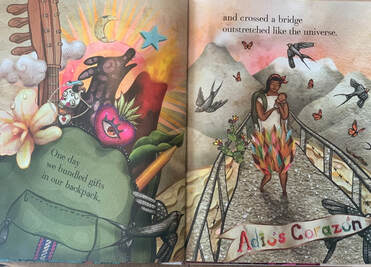 Dreamers book by Yuyi Morales Dreamers book by Yuyi Morales I was 15 years old when I was asked to pack-up a backpack with a couple of outfits and whatever else I could fit in and carry with me on a journey from Guatemala to the USA. I remember looking around the room and packing a few photographs and recuerditos (keepsakes) I didn't want to leave behind. I do not doubt that many immigrants experience this moment when they have to decide what to pack and bring along their migration journey. Besides packing the essentials, many of us pack something that will remind us of the world we are leaving behind, representing our country, homeland, and believes. Just like we pack-up objects, we also pack-up our identity within us and hold on to it as tight as possible because we know it is what makes us who we are. The things we pack-up within us are experiences, thoughts, feelings, beliefs, family, foods, music, culture, heritage, and more. All this builds our individuality. Yuyi Morales narrates this personal experience perfectly in this image. We see how her backpack includes a jatana, a pencil, nature items, and Señor Calavera. If you follow Yuyi's Instagram account, you'd see how these objects represent her identity. Objects that she carried with her as she crossed over the Mexican border to come to the USA. And just like we see in her book, the objects that represented her identity were kept safe and packed up because they were being protected or perhaps they stayed packed up because she didn't feel like her individuality would fit in the new culture. In Dreamers, we see the characters trying to blend in and function in a new country and culture but with a substantial struggle to be who they are. I experienced this as well, and so do many immigrant students and individuals who come to the United States. While many of us love our home culture, our language, and everything about our heritage, society tells us that to function successfully, we must keep our background packed up and blend in the American culture and master the English language to be successful. For many of us, it'll be years and years till we realize that our culture, language, and heritage are valuable and core to who we are. For others, this realization will never happen - and heritage, language, and culture will be lost. To me, this is a sad reality that will hinder many generations. Opportunities to Unpack As an immigrant myself, I can tell you how intimidating it is to be yourself and unpack our background for all to see. You look around, and everything is new and different. You listen around, you and all you hear is the new language -- a language you don't yet understand. However, there are ways to embrace the differences while still appreciating what is packed within us and show them to the world. Here are a few of them:
Unpacked CultureHaving our culture and heritage unpacked is just the most wonderful feeling. How do you know your culture, language, and heritage is unpacked? - When you celebrate it, appreciate it, and embrace it. When you do not fear what others will say about who you are, how you speak, or what you're wearing. When you begin to find a place in your new home, you understand that we have more similarities than differences and contribute to society to create a beautifully diverse culture. As we were reading this book with my student, we both had different takeaways from the text. Yousef here was able to draw what he understood what was happening in the story, then retell the story using his own words. He was able to personally connect with several parts in the story and was very confident understanding it because the images speak so much. I am encouraged to write my takeaways because he did the same! If you have read this book and would like to share your takeaways with me, please share them with me. I'd love to hear about your experience with this amazing book. Or if there is another book that would share these same ideas, I'd love to know of it.
Remember YOU matter! Your culture matters, your language matters, your heritage matters. So, showcase it...display for all to see and appreciate it. Thank you for reading! How to support immigrant students in challenging times?Just wanted to make sure you knew about this fantastic (and FREE) webinar opportunity to learn how to support our immigrant and refugee students. This free webinar is hosted by Re-imagining Migration and The Immigrant Learning Center's (ILC) Public Education Institute. It is a two-day online workshop featuring researchers, teacher trainers and pedagogical experts. Participants will learn:
You can register HERE for the 2020 Immigrant Student Success: Strategies and Tools for K-12 and Adult Educators on July 8 and 9, 12:00 to 3:00 PM EDT, three hours each day I am honored and humbled to present on July 9th - My topic is: Personal Stories to Build Strong relationships. I also will also be part of a discussion panelist sharing our thoughts on Immigrant StoryTelling. I hope you can join us but if you can't, I will be providing links to the recordings if you cannot join us live.
Thank you for reading!
The Bilingual/ESL Department at Region 10 ESC in North TX holds an annual symposium for their 500+ educators. This year, due to the COVID pandemic, the event was help virtually.
I was honored and humbled to be invited as their 2020 Symposium 'Power Of Unity' keynote speaker. I was so excited to connect and meet so many passionate educators who are working hard to provide their very best for all students. Day 1Keynote Presentation
The keynote presentation was on June 23rd and it was a way to kick-off the symposium - teachers had a long day of sessions to attend right after the keynote.
My presentation title was 'Shifting from Statistics to Stories' The presentation was streamed LIVE so you can find the recorded version on my YouTube channel below. **This post appeared originally in Seidlitz Education on April 21st, 2020.** It doesn’t happen as often as it should, but when it does, it is the most amazing feeling one can experience. That moment when you’re reading a book and you see your life and family experiences reflected on every single page. That moment when you see text and images intertwine on a page to bring forth cultural validation and acceptance. That moment when you close the book and cry tears of happiness because you realize that stories are so much deeper than you ever thought. I experienced all this and so much more the day I read Sometimes… by Hugo Ibarra and John Seidlitz. (video of me reading the book aloud for International Children’s Book Day.) Sometimes… is just the book we need right now. Ibarra and Seidlitz share with us a story in which immigrants’ experiences are legitimized, one that opens doors for connections and much-needed conversations. It is a story that made me think about how experiences and family stories don’t have to be forgotten. And about how significant it is when stories are shared, because they validate what is core in our existence and our hopes for what is to come. Sometimes… is a story of hope. A story of courage and strength. A story of a family who worked together through difficult circumstances to make their dreams come true. And even though sometimes things don’t go as planned and changes need to happen along the way, we see the characters rising through it all. We see Andrés and Clara holding tight to the hope offered by their mother and teachers. A hope that helps them get through every situation that comes their way. The International Children’s Book Day theme for 2020 was “A Hunger for Words”, and as much as I identify with this phrase, I also believe there’s a hunger for cultural understanding — a hunger for identity and individual acceptance. Children all over our nation deserve to open a book and see their families’ experiences and languages heard and represented. Through the lens of an unaccompanied and undocumented immigrant, an English language learner, and an educator, I closely analyzed each page of Sometimes… and wrote down a few essential points at which the book authentically reflects many of our students’ experiences.
|
Categories
All
Archives
May 2024
|
||||||


